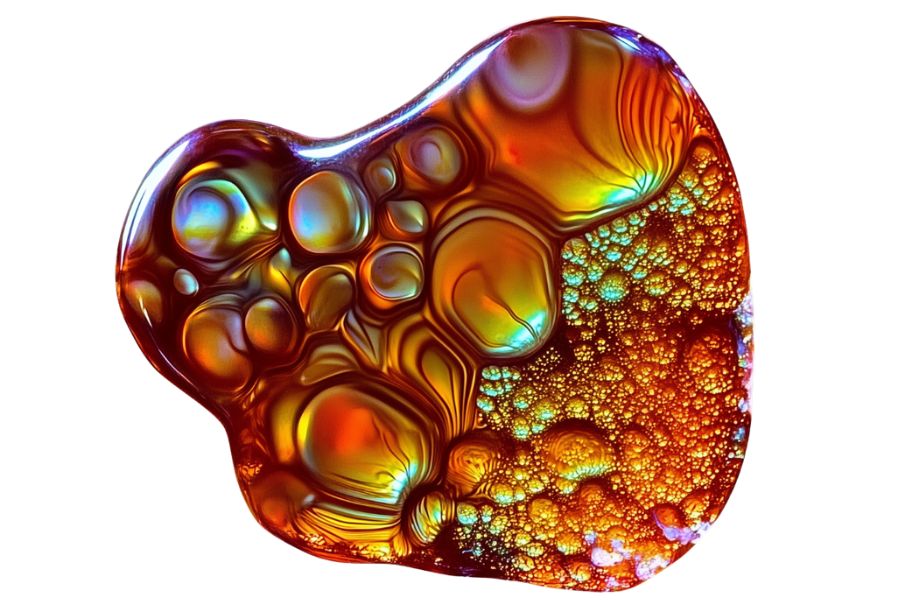Ohio has some hidden spots where fire agate can be found. Many rock collectors don’t know about these places. You might be surprised to learn that our state has these beautiful stones tucked away in certain areas.
Fire agate hunting in Ohio takes patience. The best locations are often off the beaten path. Some spots are well-known to local collectors but not to outsiders. These places have yielded nice specimens for those willing to put in the time.
I’ve spent years searching these Ohio locations. Sometimes I go home empty-handed. Other times I find small but stunning pieces. The thrill of finding even a tiny fire agate makes the search worth it.
How Fire Agate Forms Here
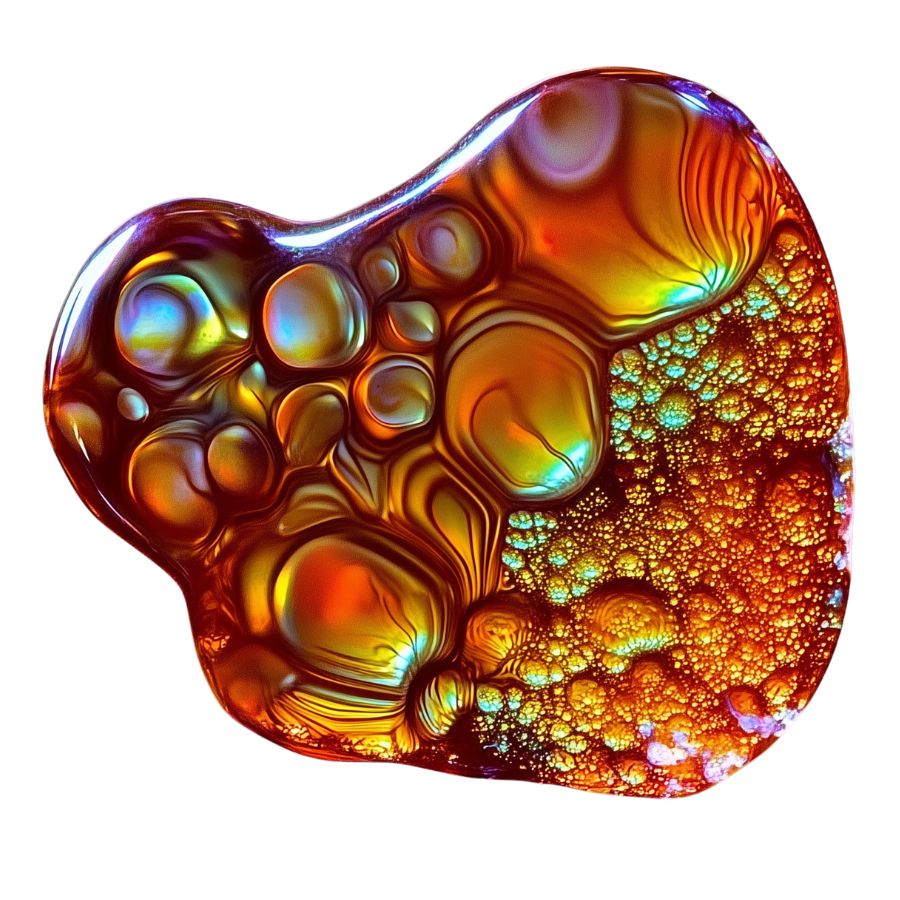
Fire Agate forms when silica-rich fluids seep into layers of chalcedony during volcanic activity. As these fluids cool down, they create super-thin layers of iron oxide and silica, kind of like stacking colorful sheets of plastic.
The iron oxide creates those beautiful iridescent colors you see – reds, oranges, and browns that seem to dance when you move the stone.
What’s really cool is that these layers are only about 0.5 microns thick (that’s thinner than a human hair!).
The more layers there are, the more intense the fire effect becomes. The whole process happens deep underground where hot water and minerals mix together over millions of years.
Types of Fire Agate
Fire agates represent nature’s artistry at its finest, showcasing spectacular plays of color that seem to dance within the stone. Each variety offers its own unique display of iridescent fire effects, created through millions of years of geological processes that layered minerals in distinctive patterns.
Brown Fire Agate
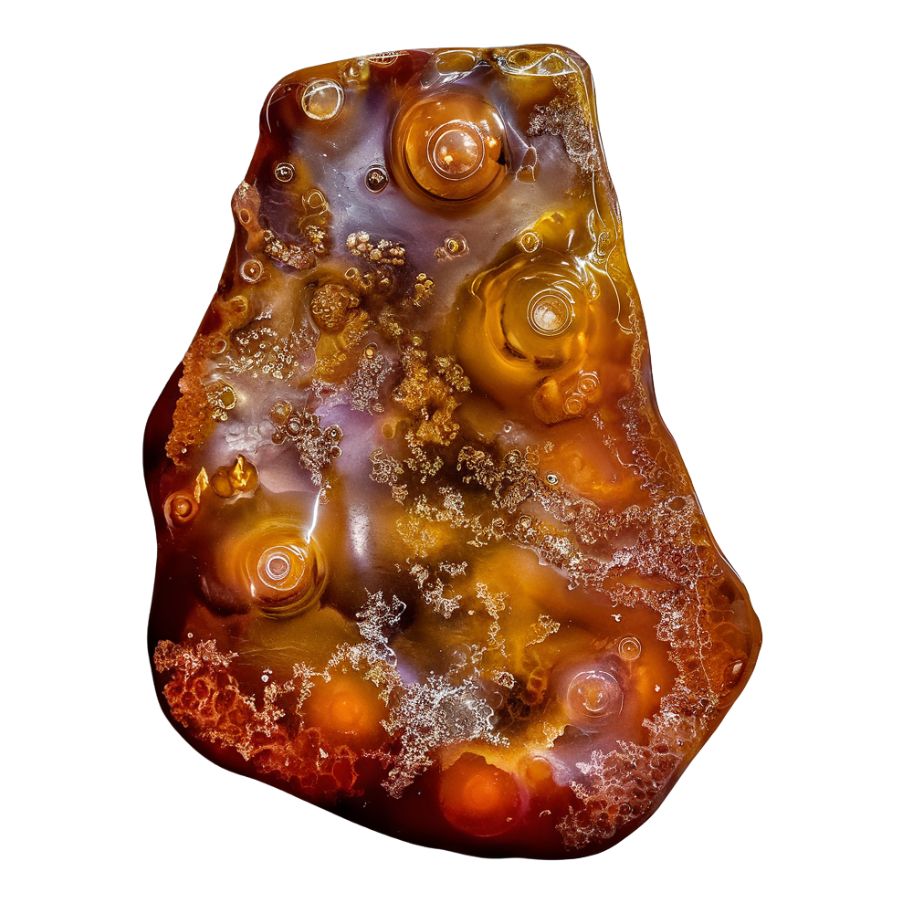
Brown Fire Agate displays a deep chocolate-brown base with brilliant flashes of color that dance across its surface. The most striking feature is how these colors appear to float at different depths within the stone, creating a three-dimensional effect.
The colors range from intense reds to bright oranges, often appearing in concentrated patches. The stone’s surface has a distinctive bubble-like texture that helps create its famous fire effect.
One special feature of Brown Fire Agate is its strong color concentration. The fire effect typically appears in bold, defined areas rather than being scattered throughout the stone.
Some exceptional pieces display color combinations that seem to shift and change as you move the stone, making each viewing angle unique.
Orange Fire Agate
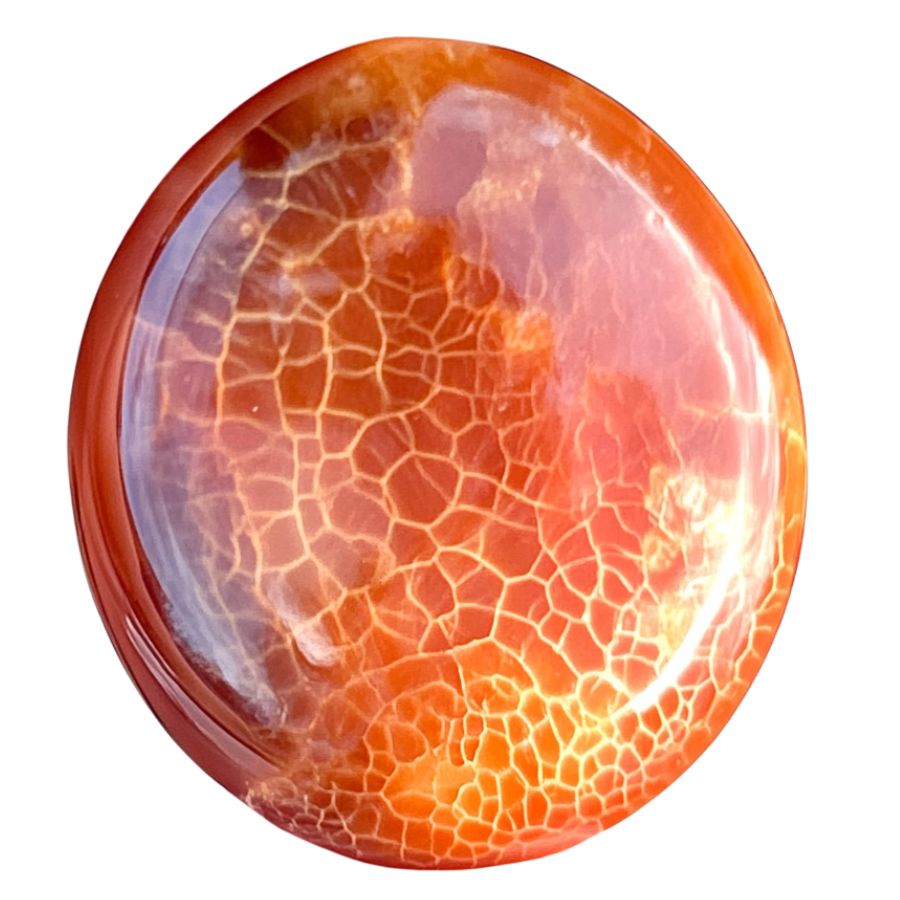
Orange Fire Agate shimmers with warm, sunset-like colors that seem to glow from within. The dominant orange tones mix with bright reds and yellows. These colors appear especially vibrant against the stone’s natural brown background.
The stone often shows interesting pattern formations that look like swirling flames or flowing liquid. These patterns form naturally during the stone’s creation and give each piece its own character.
A unique feature of Orange Fire Agate is its ability to show broad flashes of color. Instead of tiny specks, the color often appears in larger areas that create bold, dramatic effects.
The color layers in Orange Fire Agate often stack up in ways that create depth and dimension. When you look closely, you can see how these layers work together to produce the stone’s distinctive fire effect. The best pieces show clear, bright colors that remain visible from many different angles.
Yellow Fire Agate
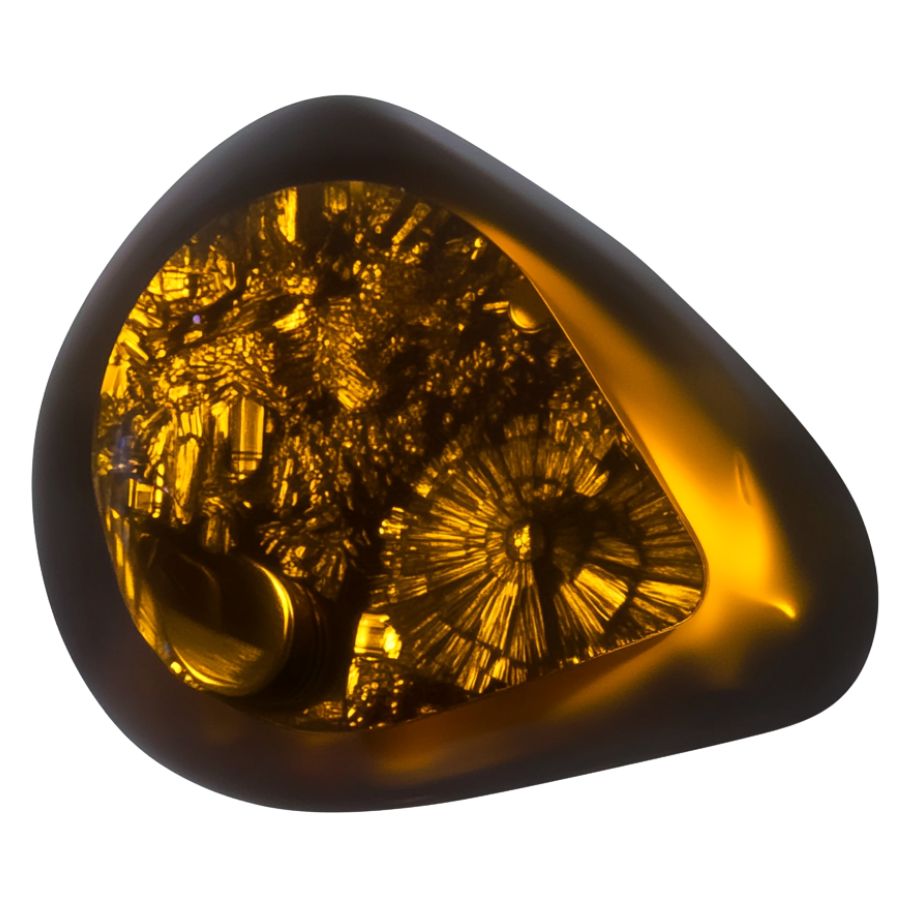
Yellow Fire Agate features bright, sunny yellow tones mixed with golden flashes that light up the stone. The yellow colors often appear alongside warm oranges and subtle greens, creating a bright, cheerful appearance.
Unlike other fire agates, the yellow variety often displays broader, more open patterns. This allows the yellow colors to spread out and create larger areas of bright color.
A special characteristic of Yellow Fire Agate is how its colors can shift between yellow and gold depending on the lighting. Sometimes, the stone shows unexpected flashes of green or blue, making it particularly interesting to observe.
The structure of Yellow Fire Agate often creates interesting patterns that look like sunbursts or radiating lines. These natural formations enhance the stone’s yellow tones and create fascinating visual effects.
Green Fire Agate
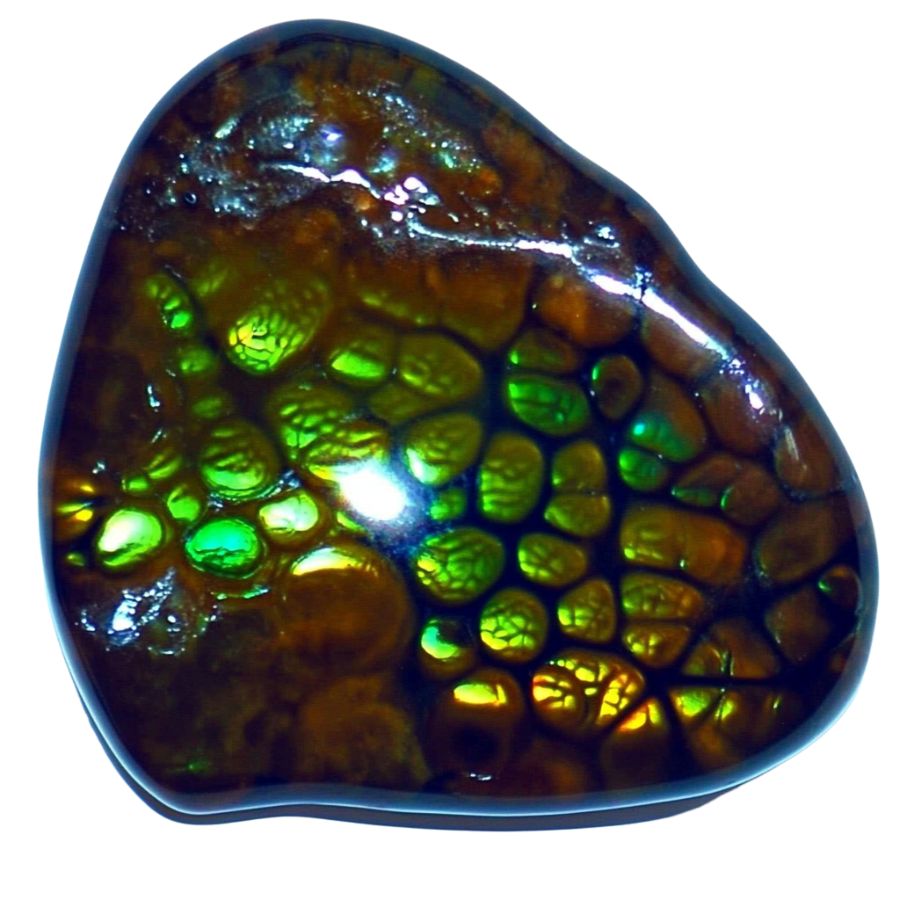
Green Fire Agate stands out with its unusual green flashes that sparkle against a dark background. This rare color combination creates an effect similar to the Northern Lights in miniature.
The green tones range from bright emerald to deep forest green, sometimes mixing with blue and turquoise highlights.
In natural sunlight, the greens become more vibrant and intense. Under artificial light, the stone might reveal subtle gold or blue undertones that weren’t visible before.
This stone sometimes shows an interesting phenomenon where the green fire appears to pulse or throb when the stone is moved. The combination of deep greens and shifting patterns creates a mesmerizing display that captivates viewers.
Peacock Fire Agate
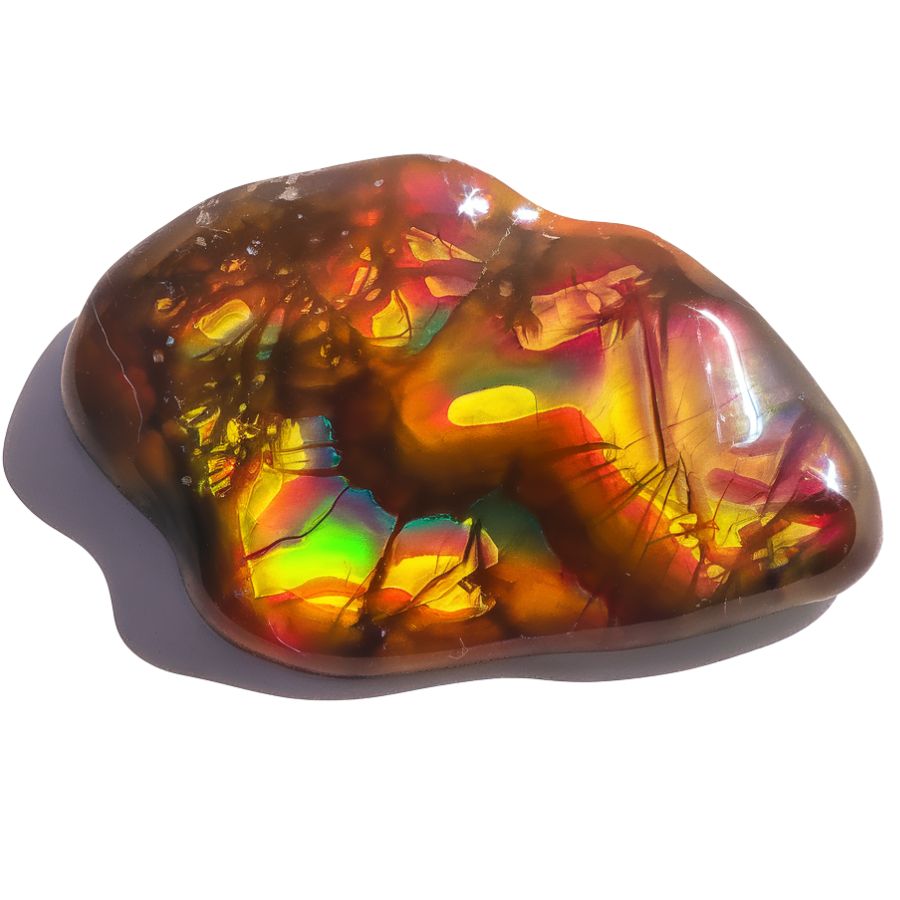
Peacock Fire Agate stands out for its remarkable display of iridescent colors that mirror a peacock’s feathers. The stone features bright greens, blues, and yellows that shimmer and change when viewed from different angles.
The stone’s surface has a unique grape-like structure called botryoidal formation. This creates small, rounded bumps across the surface that catch and reflect light in fascinating ways.
What makes this stone special is its ability to show three or more colors at once. While most fire agates display warm colors like orange and red, Peacock Fire Agate breaks this pattern with its cool, vibrant tones.
This variety requires skilled cutting to preserve its natural beauty. The cutting process must carefully consider the stone’s layers to maximize its color display and protect its delicate iridescent qualities. The end result is a stone that captures attention with its brilliant play of colors.
Crackled Fire Agate
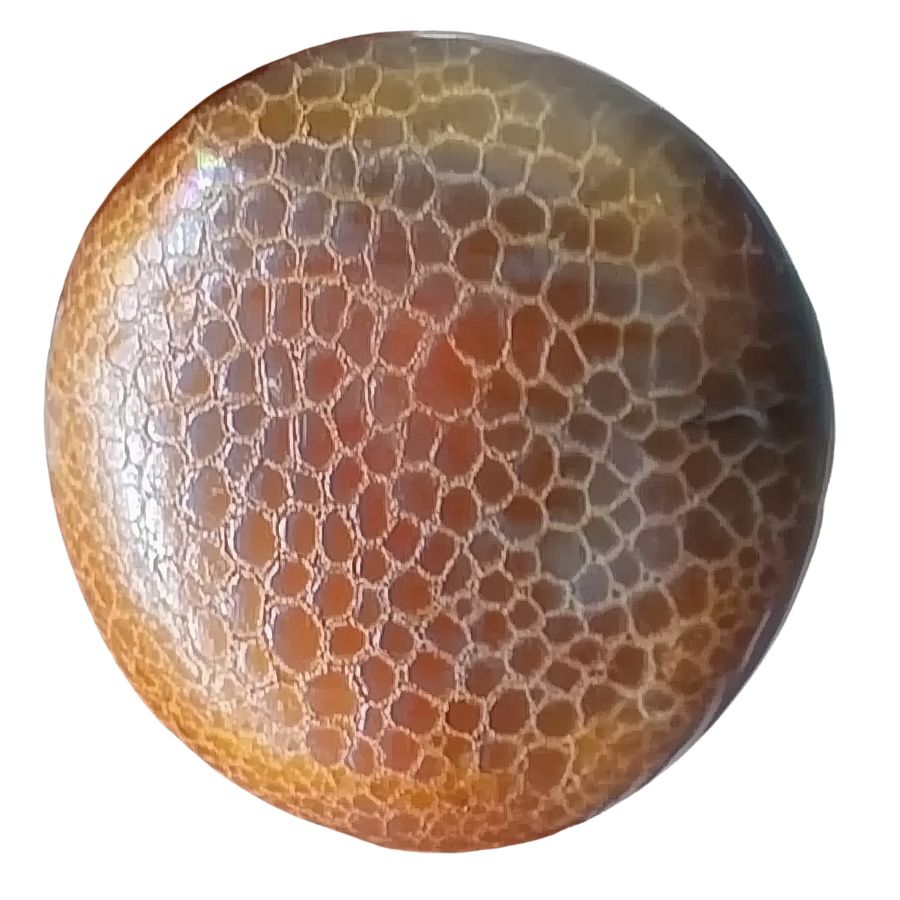
Crackled Fire Agate displays a deep reddish-brown base with bright flashes of orange, red, green, and gold. These colors create an effect that looks like flames trapped within the stone. The stone’s surface features a unique crackled pattern that resembles a spider’s web.
The stone gets its distinctive appearance through a special heat treatment process. The crackle effect adds depth and character to the stone’s natural fire-like appearance.
Unlike the uniform patterns seen in many stones, Crackled Fire Agate shows random, organic-looking designs. The combination of the crackled texture and the fire-like colors creates an impressive visual effect.
The complex internal structure of this stone makes it fascinating to observe. Light plays through the cracks and layers, creating an ever-changing display of colors. This interplay of light and pattern gives each stone its own personality and charm.
Mexican Fire Agate
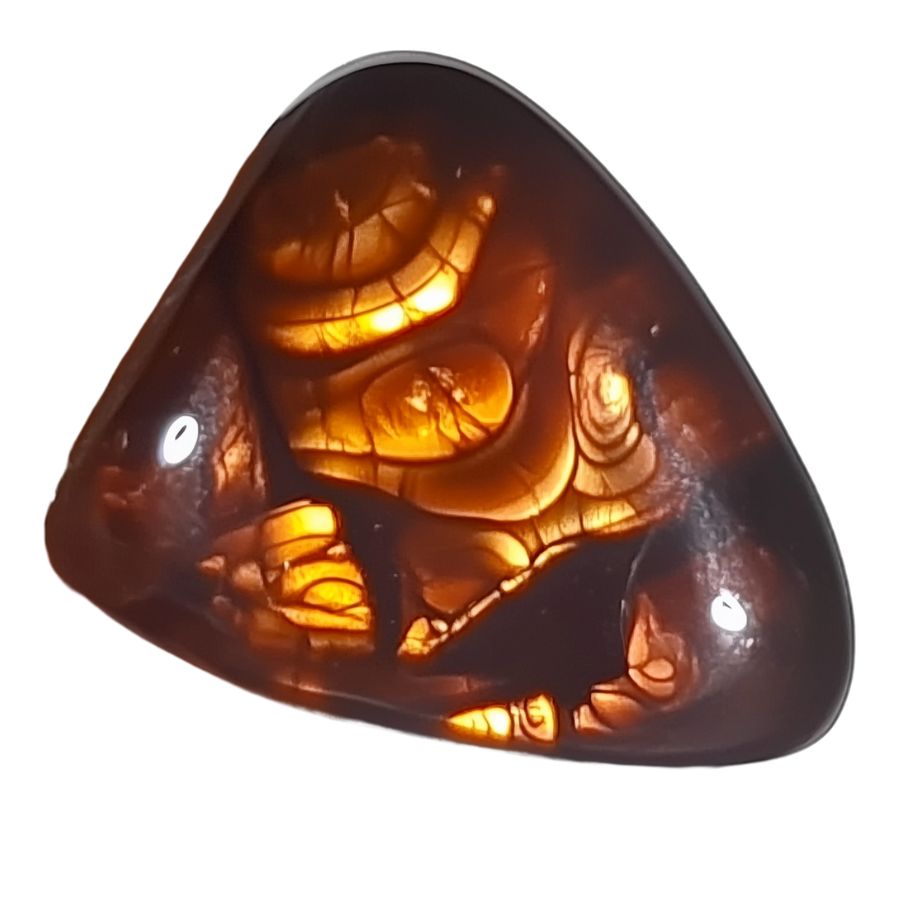
Mexican Fire Agate showcases brilliant flashes of color. The stone displays vivid reds, oranges, and yellows, with occasional hints of green and blue. These colors appear to move and shift within the stone, creating a dynamic visual effect.
The stone’s internal structure contains multiple thin layers that create its distinctive fire effect. These layers, built up over millions of years, catch and reflect light in unique ways.
Each piece of Mexican Fire Agate tells its own story through its pattern of colors. The stone’s surface often shows interesting textures and patterns that enhance its natural beauty. Some pieces display broad flashes of color, while others show intricate, detailed patterns.
The stone’s formation process gives it exceptional clarity and brightness. Unlike artificially enhanced stones, its beauty comes entirely from nature. .
Arizona Fire Agate
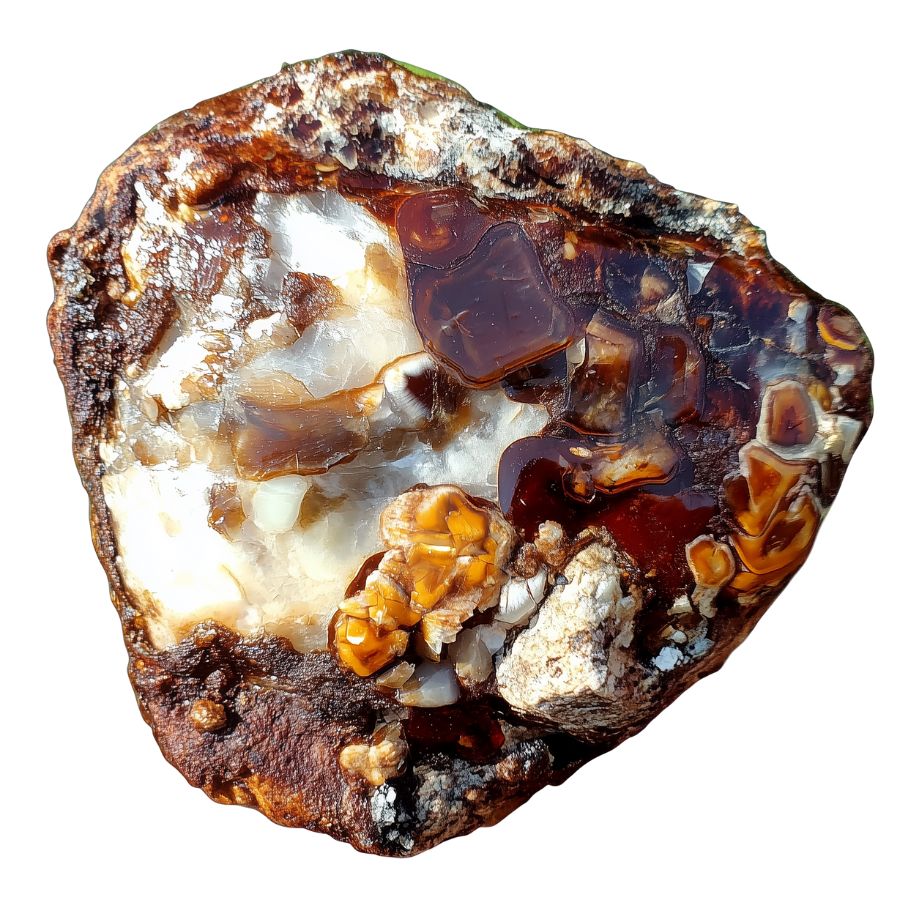
Arizona Fire Agate showcases a unique combination of a rich brown base with vibrant flashes of color. The stone’s distinguishing feature is its exceptional three-dimensional play of color, which appears to float within different layers.
It often shows stronger and more concentrated color patterns compared to other varieties. The fire effect typically appears in concentrated areas rather than spread throughout the stone.
This concentration creates dramatic focal points that catch the eye immediately. Many pieces display a distinct bull’s eye pattern where the colors radiate from a central point.
This stone is known for its durability and lasting color display. Unlike many other iridescent stones, its color effect doesn’t fade or diminish over time. The colors remain vivid even after years of exposure to light.
What Does Rough Fire Agate Look Like?
Here’s how you can identify a Fire Agate in its natural state.
Look for the Characteristic Brown Base Color
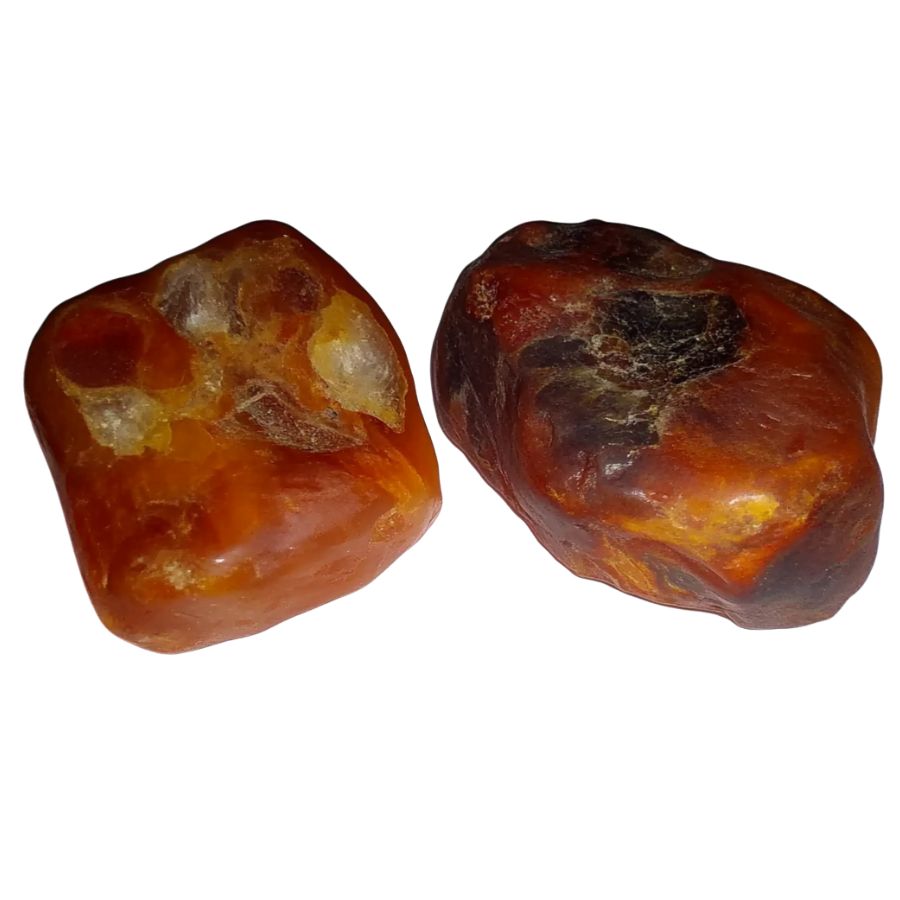
Raw fire agate typically shows up as a brownish-gray or reddish-brown nodule. Don’t expect the flashy colors right away! The base material looks pretty ordinary – like a dull, chocolate-colored rock.
Sometimes you’ll catch hints of that signature iridescence peeking through, especially in small cracks or worn areas.
Check for Botryoidal Surface Texture
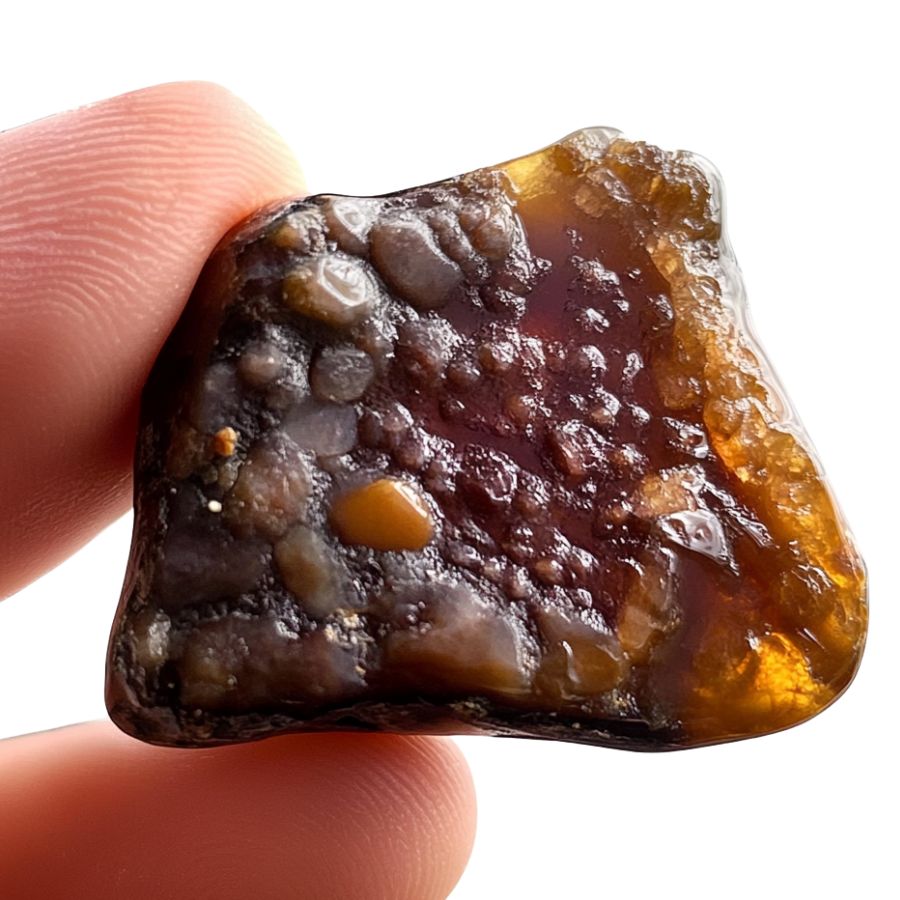
Run your fingers over the surface. Feel those grape-like bumps? That’s the botryoidal texture – a dead giveaway for fire agate.
These rounded bumps often cluster together, creating a bubbly surface that looks like frozen soap bubbles. Fresh pieces might have a crusty, rough coating hiding this texture.
Inspect for Color Play in Natural Light

Hold the specimen under direct sunlight or bright light. Rotate it slowly. Look for flashes of green, gold, or red in small areas – especially where the surface is naturally worn.
These color flashes might be subtle in rough pieces, appearing like tiny windows of color.
Test the Chalcedony Properties
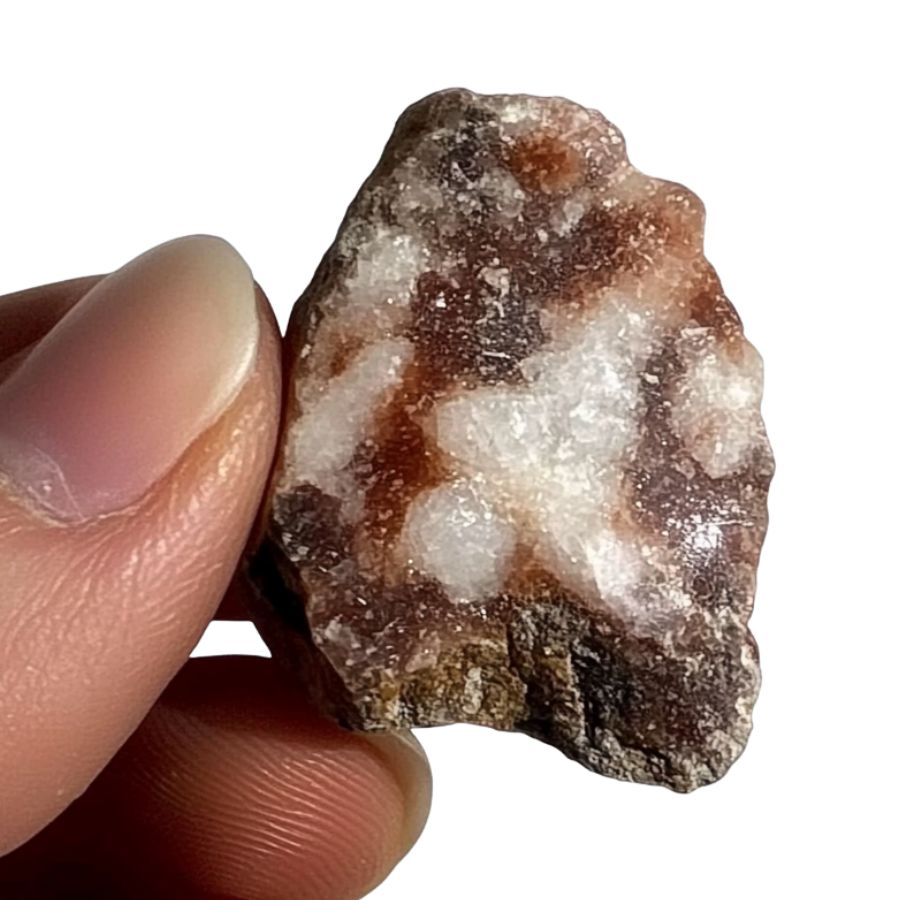
Fire agate is a variety of chalcedony, so it should feel quite solid and slightly warm to the touch. Try scratching it with a steel knife – it shouldn’t scratch easily.
The surface might show some waxy or glassy areas where the outer layer has worn away, revealing the chalcedony underneath.
A Quick Request About Collecting
Always Confirm Access and Collection Rules!
Before heading out to any of the locations on our list you need to confirm access requirements and collection rules for both public and private locations directly with the location. We haven’t personally verified every location and the access requirements and collection rules often change without notice.
Many of the locations we mention will not allow collecting but are still great places for those who love to find beautiful rocks and minerals in the wild without keeping them. We also can’t guarantee you will find anything in these locations since they are constantly changing.
Always get updated information directly from the source ahead of time to ensure responsible rockhounding. If you want even more current options it’s always a good idea to contact local rock and mineral clubs and groups
Tips on Where to Look
Fire agate is found in areas with past volcanic activity. These beautiful stones typically form in volcanic regions where silica-rich solutions filled cavities in rocks. Here’s where you should start looking:
Volcanic Rock Formations
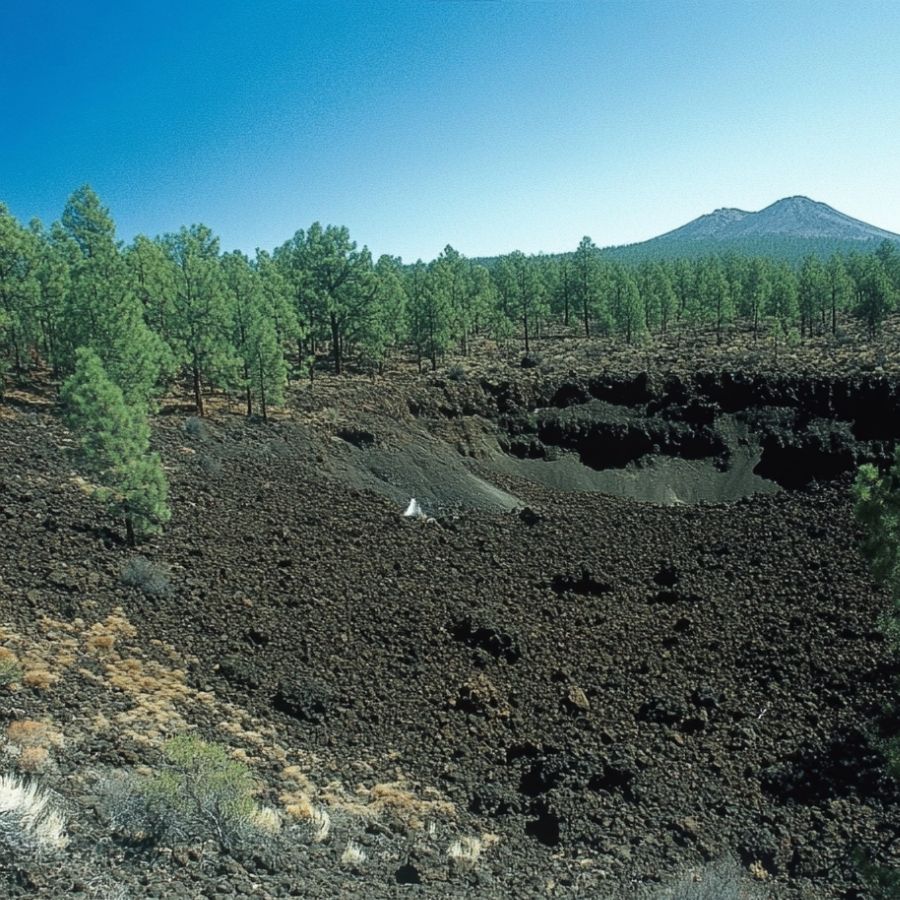
Look for areas with basalt or other volcanic rocks. The stone usually forms in gas pockets within these rocks. Check dark-colored, rough-textured rocks that seem bubbly or have lots of holes.
Areas where you spot chunks of obsidian are also promising, since both stones form in similar conditions.
Desert Washes and Dry Creek Beds
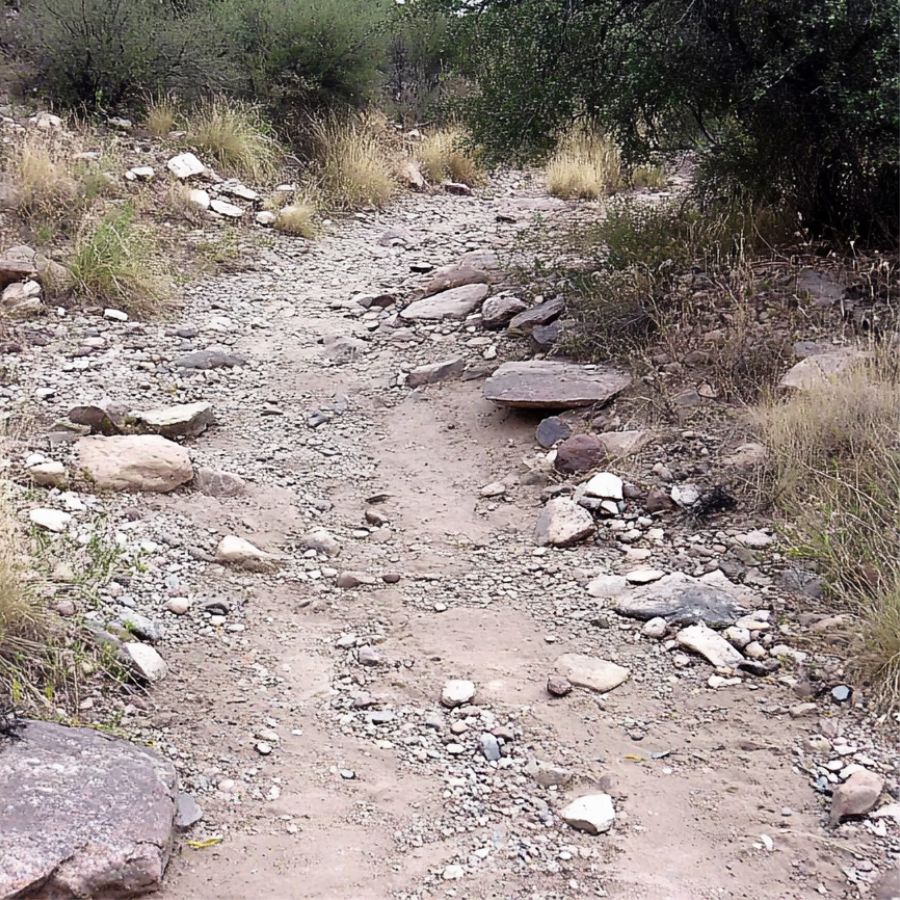
Search in dry creek beds that cut through volcanic areas. After rainstorms, these washes often expose new material and can reveal fire agate specimens that have weathered out of their host rock.
Keep an eye out for reddish-brown chunks with a waxy luster, which could be your target stone hiding under a chalcedony crust.
Old Mining Areas
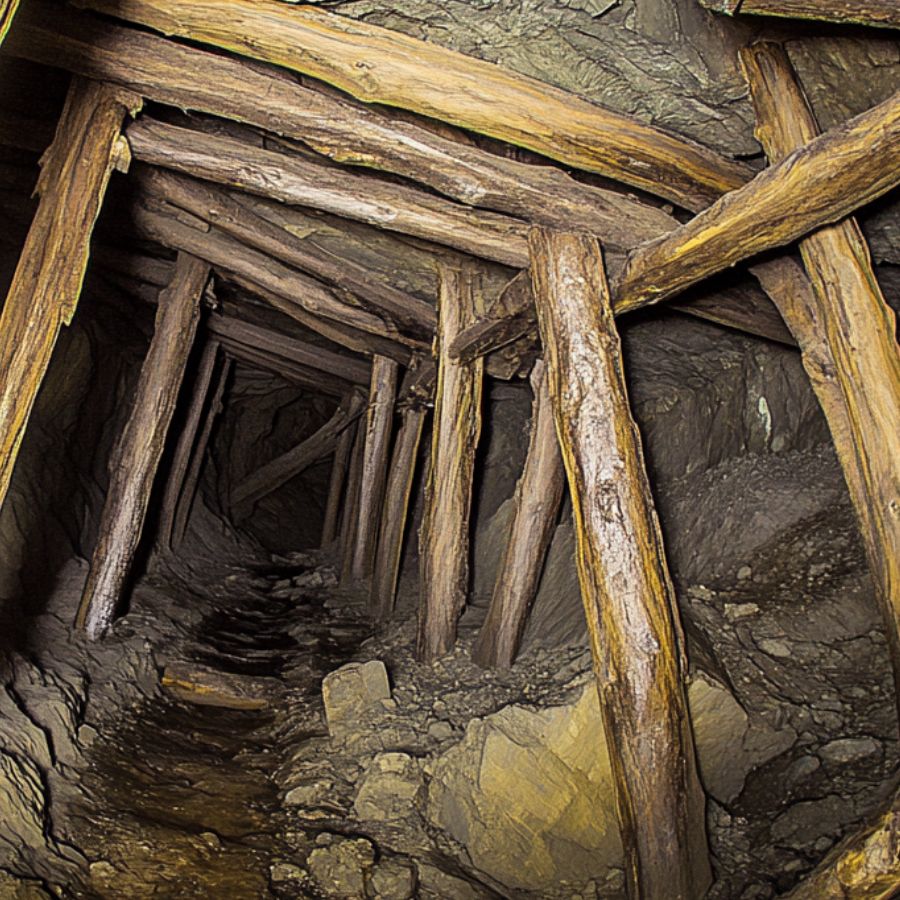
Check around abandoned mining districts, especially those known for copper minerals. Fire agate often occurs near copper deposits, so tailings piles and dumps from old mines can be great spots to search.
When you’re exploring these areas, look for rocks with a botryoidal (grape-like) surface texture and reddish-brown coloring, which are typical characteristics of fire agate’s outer appearance.
Hillside Slopes

Explore gentle slopes below volcanic outcrops. As the host rock weathers, pieces of fire agate often roll downhill and collect along these slopes.
The best time to search these areas is after heavy rains have washed away loose soil and exposed new material, giving you a better chance of spotting the distinctive brown nodules that might contain fire agate.
Some Great Places To Start
Here are some of the better places in the state to start looking for fire agates:
Always Confirm Access and Collection Rules!
Before heading out to any of the locations on our list you need to confirm access requirements and collection rules for both public and private locations directly with the location. We haven’t personally verified every location and the access requirements and collection rules often change without notice.
Many of the locations we mention will not allow collecting but are still great places for those who love to find beautiful rocks and minerals in the wild without keeping them. We also can’t guarantee you will find anything in these locations since they are constantly changing.
Always get updated information directly from the source ahead of time to ensure responsible rockhounding. If you want even more current options it’s always a good idea to contact local rock and mineral clubs and groups
Nethers Farm
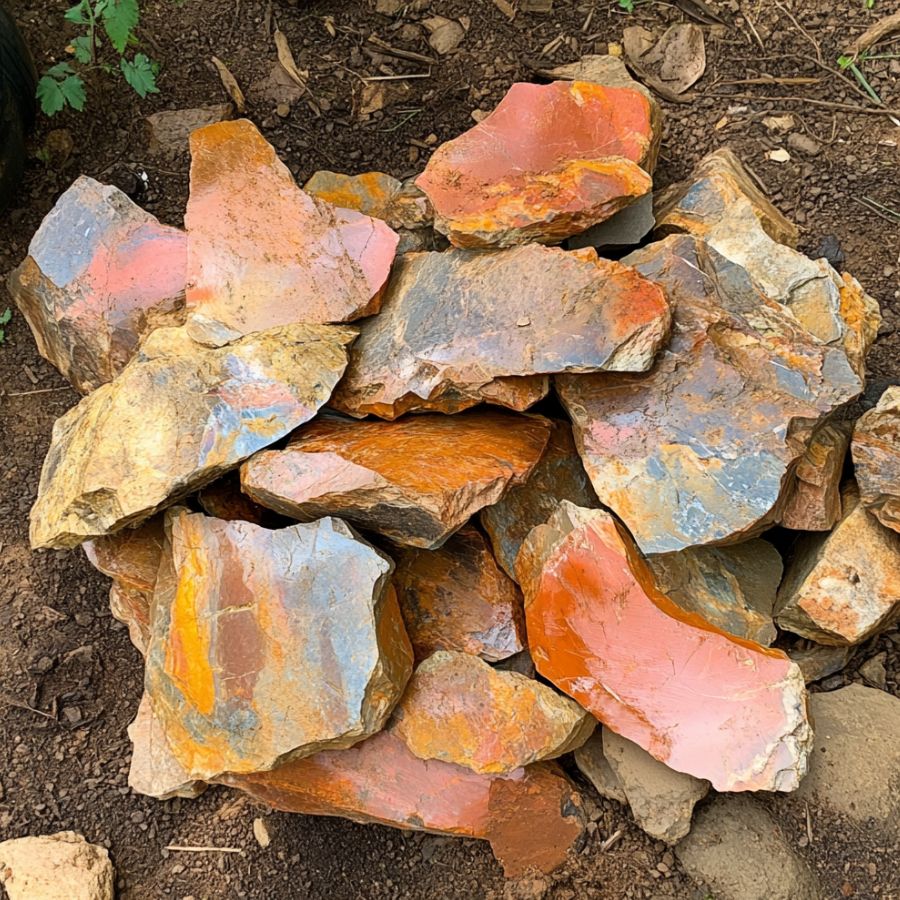
Nethers Farm is located in Licking County, at the famous Flint Ridge. This private farm lets rock collectors hunt for special stones. People have dug here for thousands of years. Native Americans used the colorful flint from this area to make tools and trade with other tribes.
The farm has several digging areas where visitors can search after paying a small fee. Many collectors focus on the back pits of the farm where more flint is exposed. While Nethers Farm is best known for its flint, lucky hunters sometimes find fire agate here too.
Look in areas with banded patterns in the rocks. These bands can hide the rainbow colors that make fire agate special. Bring a spray bottle with water to wet potential specimens as this helps show if any fire-like colors are hiding in the stone. The farm’s long history of successful finds makes it a top spot for Ohio gem hunters
Peebles

Peebles is a small village in Adams County. This area is famous for the Great Serpent Mound, a huge snake-shaped mound built by ancient people. What makes Peebles special for gem hunters is its unusual geology.
A giant meteor hit here millions of years ago, creating what scientists call the Serpent Mound Impact Structure. This impact changed the local rocks in ways that help form interesting minerals. The crash broke up rocks and pushed deep layers closer to the surface.
Visit areas near the impact site to hunt for fire agate. The best places to look are where Peebles Dolomite rock is exposed. These light-colored rocks sometimes contain cavities where the colorful fire agate forms.
During spring and fall, after rains wash away soil, hunters have better chances of spotting the glossy surfaces of agate. Local rock shops in Peebles can offer tips on the most recent productive spots.
Maumee River

The Maumee River flows 137 miles through northwest Ohio before emptying into Lake Erie. This river was once part of an important water route for early settlers and traders. The riverbed holds many geological treasures due to its interesting history.
About 14,000 years ago, a massive flood called the Maumee Torrent rushed through this valley, bringing rocks and minerals from far away. These materials settled in the river and its banks.
Fire agate hunters often search the exposed riverbanks at Farnsworth Metropark in Waterville. This park features the Roche de Bout, a large limestone rock in the middle of the river that shows the area’s geological layers.
Another good spot is near the Bowling Green Fault, Ohio’s only active fault line in the Great Lakes region. After heavy rains, new materials wash out of the banks. Many collectors find success by sifting through gravel bars using screens.
Zanesville

Zanesville sits at the meeting point of the Licking and Muskingum Rivers in central Ohio. The city is known for its unusual Y-Bridge that lets you turn in the middle of the river. For rock collectors, Zanesville’s surrounding areas offer good hunting grounds for fire agate.
The Black Hand Sandstone formation runs through this region, creating cliffs and gorges that expose many rock layers. Blackhand Gorge State Nature Preserve, about 20 miles west of Zanesville, has hiking trails that take you past exposed rock faces where fire agate might be found.
Water erosion in the preserve has cut through different rock layers, revealing potential gem pockets. Dillon State Park northwest of Zanesville is another promising location. The park’s stream beds often expose freshly weathered rocks after rainstorms.
Look for rocks with waxy or glass-like sections that might contain the iridescent layers of fire agate. Spring is usually the best season for hunting after winter freezes have cracked open new rocks.
Athens
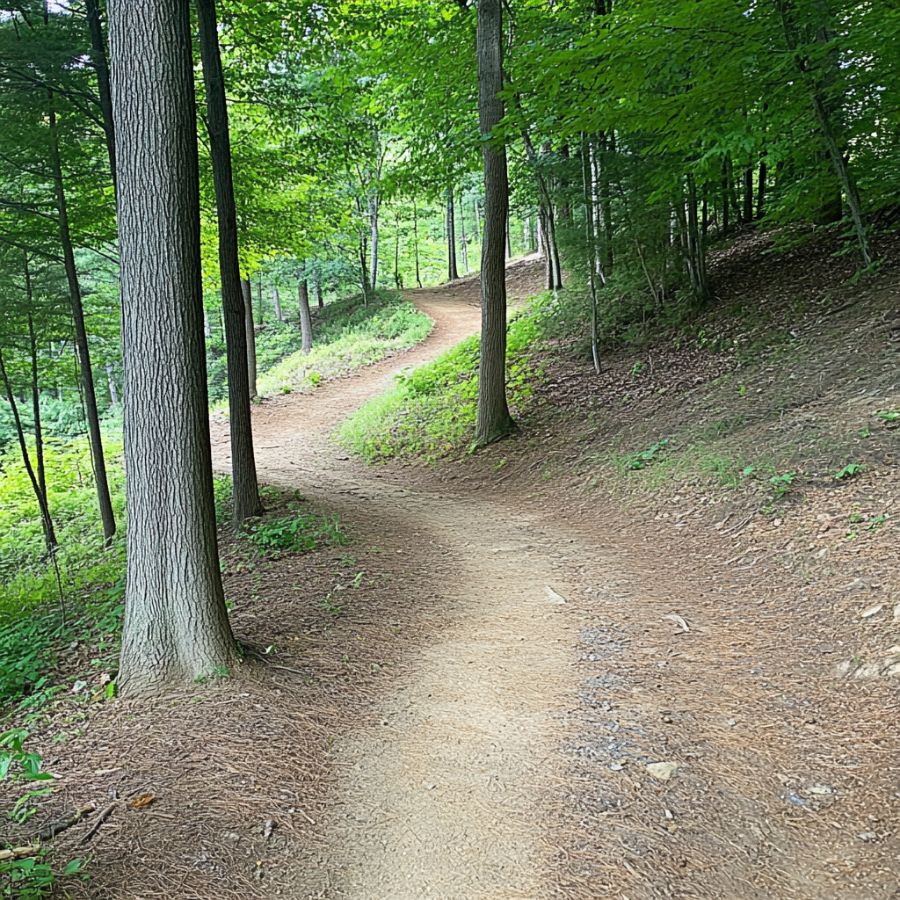
Athens is home to Ohio University in the hilly southeastern part of the state. Unlike northern Ohio, glaciers never covered Athens during the Ice Age. This means the hills and valleys formed naturally over millions of years without being flattened by ice.
The area has many layers of sandstone and shale with coal seams running through them. Fire agate hunters often visit Strouds Run State Park just outside Athens. The park has several trails that pass exposed rock layers where gems might be found.
Another good spot is Wayne National Forest, which surrounds much of Athens County. Old mining areas in the forest sometimes expose minerals not normally seen at the surface.
After heavy rains, check small streams and gullies where water has washed away soil and exposed fresh rock. The dark red soils in some areas are good indicators of iron-rich conditions where fire agate might form.
Places Fire Agate has been found by County
After discussing our top picks, we wanted to discuss the other places on our list. Below is a list of the additional locations along with a breakdown of each place by county.
| County | Location |
| Erie | Sandusky |
| Belmont | Barnesville |
| Lake | Gildersleeve Mountain |
| Highland | Serpent Mound Zinc District |
| Licking | Newark |
| Clark | Springfield |
| Hocking | Route 33 Road Cuts |
| Ross | Chillicothe |
| Wood | Pugh Quarry Area |
| Ashland | Loudonville |
| Hancock | Findlay |
| Ottawa | Marblehead |
| Tuscarawas | Dover |
| Guernsey | Cambridge |
| Lorain | Elyria |
| Washington | Marietta |
| Perry | Shawnee |
| Stark | Massillon |
| Coshocton | Coshocton |
| Champaign | Urbana |
| Fairfield | Lancaster |
| Highland | Hillsboro |
| Wayne | Wooster |

